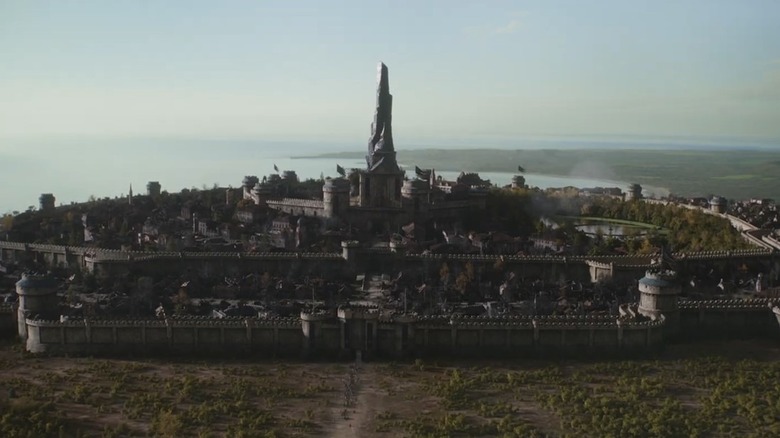The Witcher's Monoliths Explained
For any fantasy fan questing after a TV franchise to satisfy their otherworldly entertainment needs, Netflix's hit series "The Witcher" is something of a magic-and-mayhem-filled dream come true. Centering on the sword-and-sorcery exploits of the show's eponymous monster-hunting Witcher named Geralt of Rivia (Henry Cavill), the series plunges viewers into a mythic realm teeming with unearthly creatures and rooted in a densely detailed backstory replete with intricately involved social strata, religious lore, politics and more.
With that in mind, it can sometimes be a bit of a challenge to keep all the various moving parts of "The Witcher" and its vast alternate reality sensibly sorted. From mapping the extent of the Continent where all the supernatural action and far-flung travels take place, to cataloging the various species of unholy creatures lurking about, fans can be excused for losing track of what's what. In that regard, some strange structures dotting "The Witcher" landscape that fans might like to have explained are the towering and enigmatic monoliths.
Carvings on the monoliths may reveal their purpose
As viewers familiar with "The Witcher" have likely already noted, monoliths are huge, mysterious columns of volcanic obsidian that crop up everywhere from the more populated parts of the Continent to isolated locations on the plains and in remote mountainous areas. On the subreddit r/netflixwitcher, u/BWPhoenix detailed what they knew so far about these structures in a thread titled "A guide to Monoliths and Magnaliths in the showverse." According to the Redditor, these structures have inspired cities and, indeed, entire civilizations to be constructed around and near them. And while scholars have long been intent on deciphering the secret of the monoliths' ancient origins, it has yet to be learned who or what originally created the soaring stone spires and what their true purpose might be.
But as noted in the show by sorcerer-archaeologist Istredd (Royce Pierreson), the glyphs or carvings on the monoliths may hold the key to their mysterious nature. "Every glyph has a clue to something across the Continent," he said, adding, "Most are history, but some might be more. The prophecy, the future, I want to explore it all." And while Istredd's cryptic comments offer little to go on, they seem at least to hint at an explanation for "The Witcher's" so-far inscrutable monoliths. Perhaps we'll learn more about the monoliths and their connection to the past — or future — in Season 3, which has been confirmed by Netflix to be in the works.

